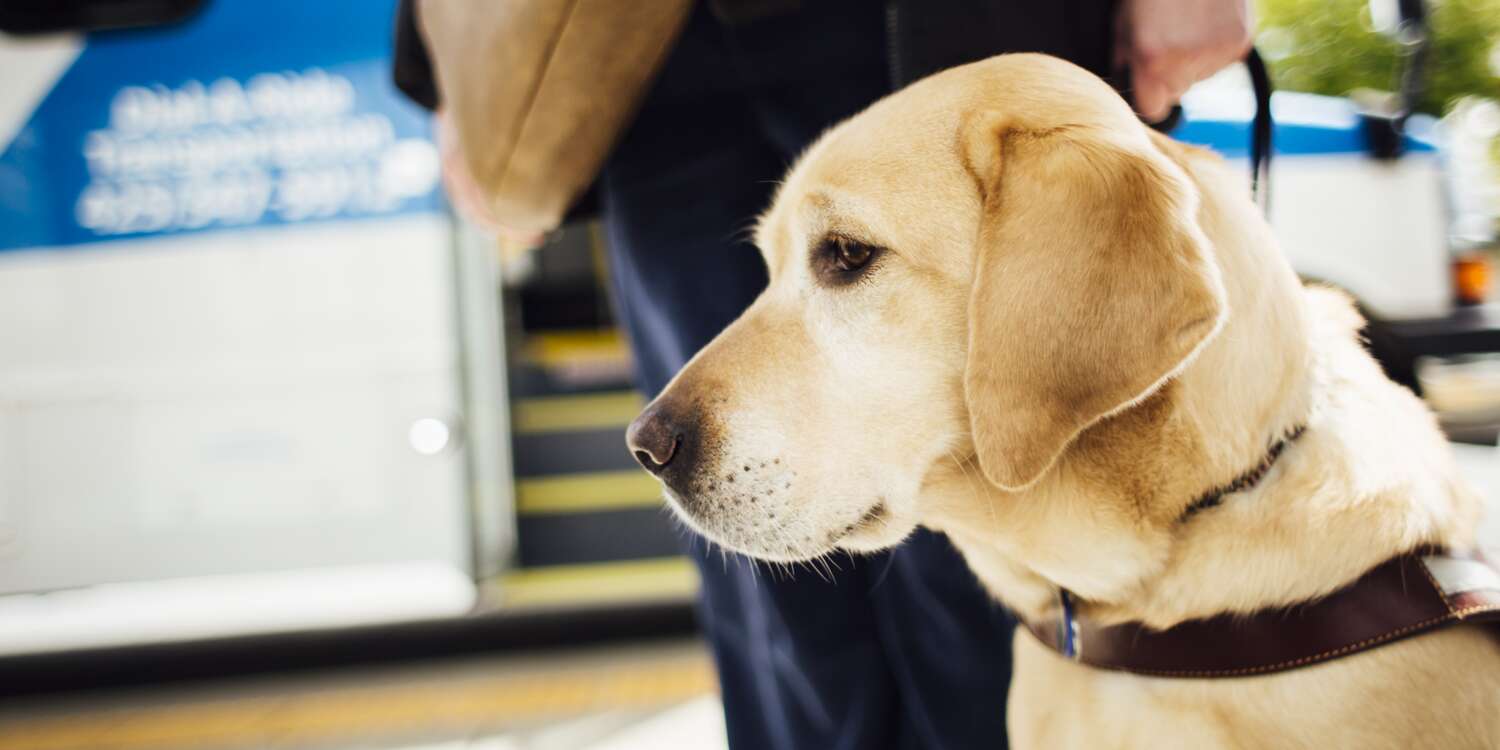
Animals on buses
We appreciate animals and pets in all shapes and sizes, so we have policies in place to ensure the safety of service and non-service animals when it comes to riding our buses. For more detailed information on our policies, please read our Rules of Conduct.
Service animals
In accordance with the Americans with Disabilities Act, service or guide animals are allowed on all Community Transit buses.
A service animal means any dog that is individually trained to do work or perform tasks for the benefit of an individual with a disability, including a physical, sensory, psychiatric, intellectual, or other mental disability.
Emotional Support Animals are not considered service animals by the Americans with Disabilities Act (ADA) or under Washington state law.
Service animals are limited to dogs. Service animals are not required to be muzzled. If a service animal is not harnessed, leashed, crated, or tethered, it must remain under the control of the individual with disabilities through voice, signal, or other effective controls.
Non-service animals
Some pets and non-service animals are allowed on local and Swift buses with the following rules:
- Dogs and cats are not required to be in a crate. However, pets that are not in a crate are required to wear a leash and a commercially produced muzzle that covers the pet’s mouth and is secured behind the head. All other small animals must be in a crate during transportation.
- In all cases, owners must have complete control of their animal at all times. Animals cannot occupy a seat, block the aisle, wander or disturb other passengers. Animals cannot run at large without a leash or obstruct the flow of passenger or bus traffic. Animals may occupy a passenger’s lap or under the seat while in a transit vehicle or facility.
- All animals are prohibited from leaving waste on transit property.
- On Sound Transit buses, only service animals and small animals in carrying containers are allowed.

